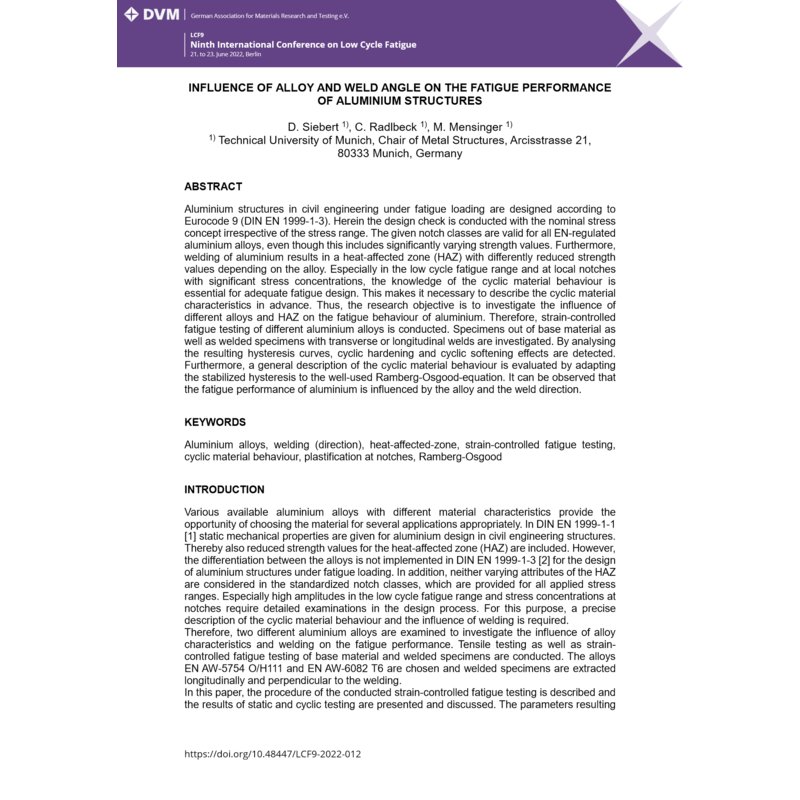- Online only



Low Cycle Fatigue (LCF, 10³<N<105) and High Cycle Fatigue (HCF, 105<N<108) are based on different failure mechanisms. LCF is characterized by local plastic deformations whereas HCF failure is the result of linear elastic deformations. Indeed, dominating local plastic deformations require a local assessment of strains and stresses in the structure. Especially in the low cycle fatigue range and at local notches with stress concentrations the knowledge of the cyclic material behavior is essential for adequate fatigue design. This makes it necessary to describe the cyclic material in advance.
Aluminum structures in civil engineering under fatigue loading are designed according to Eurocode 9 (EC 9, DIN EN 1999-1-3). Herein the…

Datenschutzbedingungen (bearbeiten im Modul "Kundenvorteile")

Lieferbedingungen (bearbeiten im Modul "Kundenvorteile")

Rücksendebedingungen (bearbeiten im Modul "Kundenvorteile")
Low Cycle Fatigue (LCF, 10³<N<105) and High Cycle Fatigue (HCF, 105<N<108) are based on different failure mechanisms. LCF is characterized by local plastic deformations whereas HCF failure is the result of linear elastic deformations. Indeed, dominating local plastic deformations require a local assessment of strains and stresses in the structure. Especially in the low cycle fatigue range and at local notches with stress concentrations the knowledge of the cyclic material behavior is essential for adequate fatigue design. This makes it necessary to describe the cyclic material in advance.
Aluminum structures in civil engineering under fatigue loading are designed according to Eurocode 9 (EC 9, DIN EN 1999-1-3). Herein the design check is conducted with the nominal stress concept irrespective of the stress range. Thus, LCF as well as HCF stress ranges are covered with the same concept. Furthermore, the given notch classes in EC 9 are valid for all regulated aluminum alloys even though this includes significantly varying strength values. In addition, the EC 9-design concept does not differentiate between base material and welded structures. Consequently, also the heat-affected zone (HAZ), which is often decisive for the fatigue performance of aluminum, is not explicitly considered.
The research objective is therefore, to investigate the influence of different alloys and welded material (HAZ) on the fatigue behavior of aluminum. In addition, the direction of the weld and its influence on the fatigue strength is explored. This is done by stress- and strain-controlled-tests of different aluminum alloys. To this purpose, specimen out of base material as well as welded specimen with different angles between weld and force direction were investigated. By analyzing the resulting hysteresis curves of strain-controlled tests, cyclic hardening and cyclic softening effects were detected. Furthermore, a general description of the cyclic material behavior was evaluated by adapting the stabilized hysteresis to the well-used Ramberg-Osgood-equation. The resulting information was used to describe the material behavior next to notches in the low cycle fatigue range.
In this paper, the procedure of the strain-controlled testing is described and results are presented and discussed. It already can be observed, that the fatigue performance of aluminum is definitely influenced by the material and the weld direction.